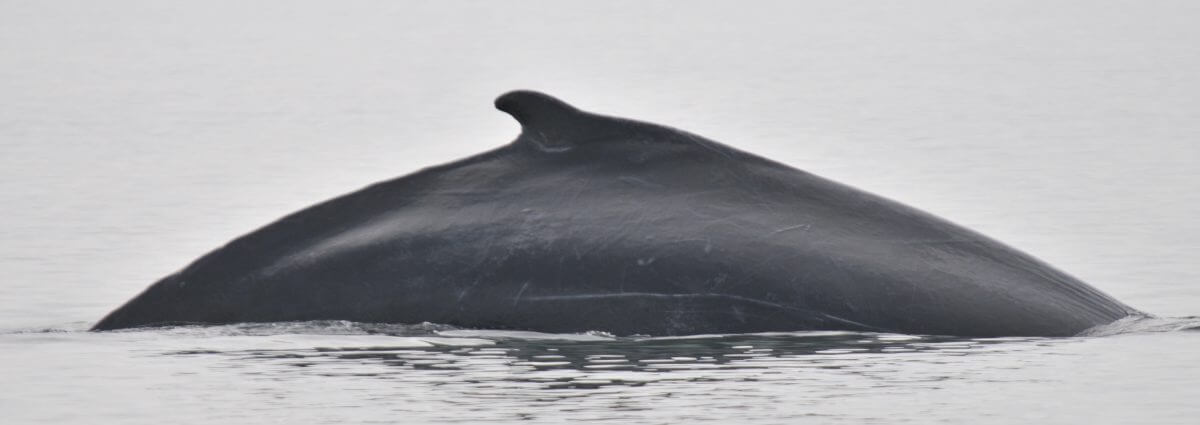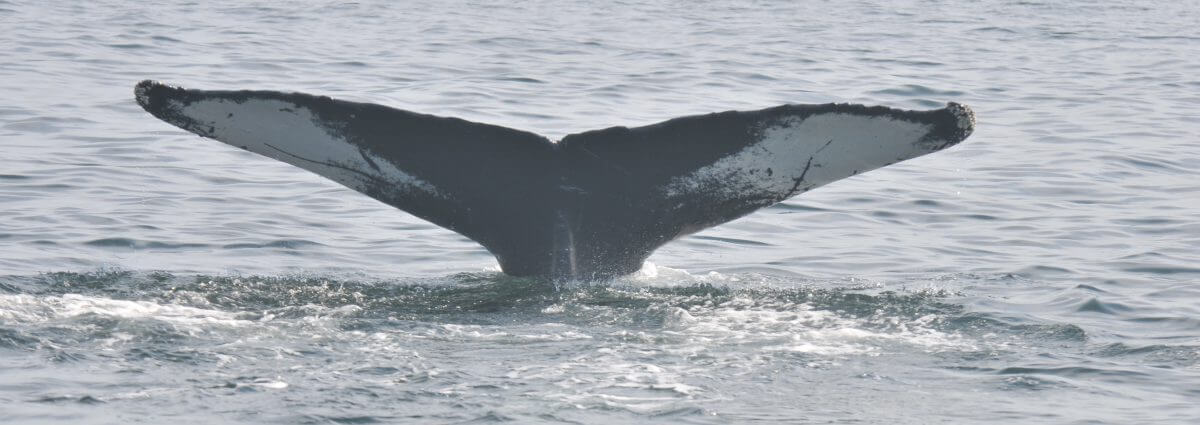Whip
Humpback Whale


-
ID number
H129
-
Sex
Male
-
Year of birth
Unknown
-
Known Since
1983
Distinctive traits
Whip owes his name to the mark on the left lobe of his tail.
Life history
Whip is a relatively unknown visitor to the estuary.
The team at the Mingan Island Cetacean Study (MICS), which works mainly in the Gulf and Gaspé Peninsula, is very familiar with this male humpback whale. They have identified him over the course of some 20 seasons.
The animal is believed to have become entangled in fishing gear in 2013. That year, the MICS team photo-identified him in July, and excursionists photographed him in September. The September photos reveal rope marks at the tip of the peduncle, at the base of the two lobes of the tail fin. Whip appears to have freed himself from the nets, as no reports concerning him were made to the Quebec Marine Mammal Emergency Response Network (RQUMM).
Observations history in the Estuary
Years in which the animal was not observed Years in which the animal was observed
Latest news from the publications Portrait de baleines
August 12 marked Whip’s fourth visit to the estuary, but it was far from his first visit to the St. Lawrence! The team at the Mingan Island Cetacean Study (MICS), which gave him the name H129, has known this individual since 1983. As observations and photos accumulated, the MICS team noticed that Whip often swam in the company of females. During his first visit to the estuary in 2014, however, the humpback whale was accompanied by Siam, another well-known male in the marine park. Based on photos of Whip taken by MICS, marks on his peduncle suggest that he may have been entangled in the summer of 2013. The whale would therefore have managed to extricate himself from the ropes on his own.
But why does Whip spend more time in the Gulf than in the estuary? Remember that whales come to the St. Lawrence to feed. So if they already know a place where food is abundant, they are unlikely to look any further! It is also possible that competition between individuals or species and disturbance in a particular area may be responsible for the displacement and variations in the length of stay of certain individuals!
This stranger to the Estuary was observed on July 15 in the company of Siam, another male, during the telemetric monitoring conducted by the GREMM-DFO team.
The MICS team has known this male well since 1983, having identified him during 23 summer seasons in the northern (Mingan region) and southern (Gaspé Peninsula) parts of the Gulf, but never in the Blanc-Sablon sector. They named him Whip after the mark on his left fluke. This year (the 24th season he was identified), Whip was seen by the MICS team on July 2 off of Gaspé.
Pairs of male humpback whales are rare; they are usually observed when there is a female in the group. Moreover, MICS indicates that Whip was very often accompanied by various females.
Whip is believed to have suffered an entanglement in fishing gear in 2013. According to MICS, he was photo-ID’s on July 14, and the crew of a Gaspé-based whale-watching boat photographed him on September 30. In the photos from September, fresh, distinctive marks are visible: the imprint of a rope that probably got caught around the end of the peduncle at the base of the two flukes of the caudal fin. Whip is thus thought to have freed himself from this incidental catch that occurred in summer of 2013, as no such incident had been reported to the Quebec Marine Mammal Emergency Response Network (QMMERN). According to the protocol adopted by MICS to document the marks caused by incidental catches, members of their team take photos of the peduncle when humpbacks dive and raise their tail, in addition to identification photos.
Let us recall Tryphon, a well known sperm whale in the Estuary who perished in 2009 following entanglement in the ropes and buoys of a crab trap, despite close monitoring by the intervention teams and the attempts made to free him. As for the fin whale Capitaine Crochet, victim of a similar incident in 2013 who had very little chance of survival; this Estuary regular has not been seen again since.
Fishing gear bycatch is a threat to cetaceans. To report such an incident, dial the toll-free number 1877-7baleine (1877-722-5346); Marine Mammal Emergencies is reachable 24/7.


